
This unit describes the integumentary system.
- Subject:
- Health and Physical Education
- Material Type:
- Lecture
- Provider:
- Open Michigan
- Author:
- Oregon Health & Science University
- Date Added:
- 09/15/2021

This unit describes the integumentary system.
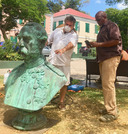
International Day for Monuments discussion with Former Senator Myron Jackson about the bust of King Christian the IX being removed from the Emancipation Gardens public space as a result of public outcry.
The measure appropriates $20,000 from the St. Thomas Capital Improvement Fund to cover the cost of removing and replacing the sculpture. Additionally, the program promotes new discourses, alternative and nuanced approaches to established historical narratives, and promotes inclusive and diverse points of view.

This introductory unit covers definitions of terms used in the component, with an emphasis on paradigm shifts in healthcare, including the transition from physician-centric to patient-centric care, the transition from individual care to interdisciplinary team-based care, and the central role of technology in healthcare delivery. This unit also emphasizes the core values in US healthcare.
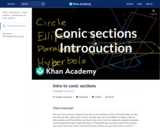
This 11-minute video lesson introduces conic sections.

Human evolution is the lengthy process of change by which people originated from apelike ancestors. Scientific evidence shows that the physical and behavioral traits shared by all people originated from apelike ancestors and evolved over a period of approximately six million years. This is a multimedia presentation with videos, lesson plans, a glossary, an educators guide and more.
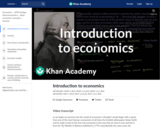
Basic introduction to what microeconomics and macroeconomics study. A bit on Adam Smith. This video will enforce standard EPF. 1

The CyberSquad creates a bar graph representing the amount of bugs that are infecting the Cybrary in this video from Cyberchase.

In this Cyberchase video segment, the CyberSquad locates the Cyberchase Council by using negative numbers.

This online exhibit explores the history and development of the electric guitar. It includes information about the instrument designers and the musicians who influenced the creation of new guitars and innovations in their sound. Examples of about 40 different guitars are included with descriptions of each. There is also information on how different types of acoustic and electric guitars operate with the sounds of each available for listening. Finally, addition information, references, and links are included.

This 9 minute video will explain what a 401(k) is and how a student can use this to build wealth for retirement. This video will enforce standard EPF. 18

This18 minute video will teach students what an Individual Retirement Account (IRA) is and specifically, the Roth IRA. This video will provide examples of how investing through a Roth IRA can build capital for later in life. This video will enforce the standard EPF. 18

This 4 minute video will define term life insurance, who should purchase and why it is cheaper than a whole life insurance policy. This video will aid in the mastery of standard EPF. 14

This 13 minute video will help students understand what an IRA or Individual Retirement Account is and more specifically, what a Traditional IRA is. This video will enforce standard EPF. 18
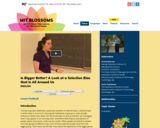
This learning video addresses a particular problem of selection bias, a statistical bias in which there is an error in choosing the individuals or groups to make broader inferences. Rather than delve into this broad topic via formal statistics, we investigate how it may appear in our everyday lives, sometimes distorting our perceptions of people, places and events, unless we are careful. When people are picked at random from two groups of different sizes, most of those selected usually come from the bigger group. That means we will hear more about the experience of the bigger group than that of the smaller one. This isn't always a bad thing, but it isn't always a good thing either. Because big groups ''speak louder,'' we have to be careful when we write mathematical formulas about what happened in the two groups. We think about this issue in this video, with examples that involve theaters, buses, and lemons. The prerequisite for this video lesson is a familiarity with algebra. It will take about one hour to complete, and the only materials needed are a blackboard and chalk.

The aim of this video lesson is to teach students about the different topologies of computer networks and how they function. The approach that is used is highly correlated with common knowledge about weddings and the local Malay culture associated with weddings. Students should be able to relate the act of delivering food to a large crowd of people to the basic principles of network topologies and the method of data transfer within each type of topology. The lesson will begin in a classroom with students working in small groups, answering assigned questions. Teaching aids such as color cards will be used. One student from each group will be appointed as the wedding event manager, and she/he will have to discuss and act out with group members in order to answer more challenging questions. At the end of the lesson, students will be asked to come up with their own version of a hybrid computer network topology. The lesson concept taught here not only educates students on computer topologies, but also introduces students to an important cultural perspective of Malaysia. Above all, this video is designed to assist students with their study of Computer Literacy in schools. The lesson will take up to 60 minutes to complete. Materials needed include: 10 red cards representing waitresses; 10 green cards representing waiters; 10 blue cards representing tables in the hall; a sketch book; and classroom tables and chairs.

This art history video discussion looks at the reconstruction of the "Ishtar Gate and Processional Way", Babylon, c. 575 B.C.E., glazed mud brick (Pergamon Museum, Berlin).

Members of the Islamic Center of Washington, DC discuss the religious and spiritual significance of Ramadan and the celebration that concludes it, Eid al-Fitr, in this video segment from Religion & Ethics Newsweekly.

In this video segment adapted from NOVA scienceNOW, follow scientists in their quest to understand how stable elements are made and how to create the elusive element 114.
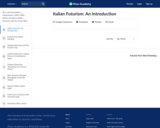
This essay looks at Italian Futurism. It includes a short video featuring a work by 19th-century scientist and photographer Étienne-Jules Marey, whose chronophotographic (time-based) studies depicted the mechanics of animal and human movement.
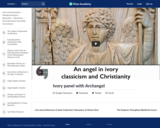
This art history video discussion looks at a Byzantine panel with archangel, Ivory leaf from diptych, c. 525-50, 16.8 x 5.6 x 0.35 in. (42.8 x 14.3 x 0.9 cm), probably from Constantinople (modern Istanbul, Turkey), (British Museum, London).